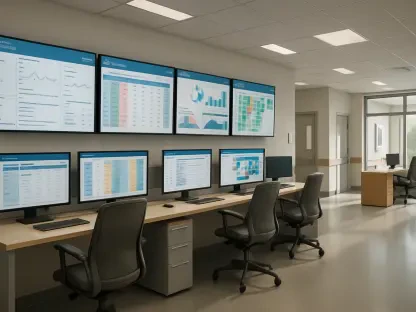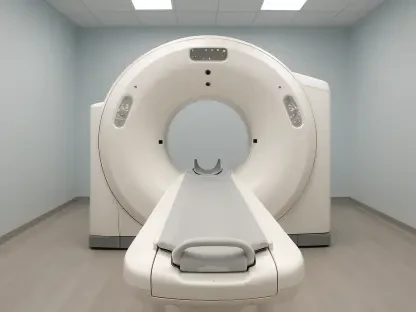In the ever-evolving landscape of medical diagnostics, a quiet revolution is taking place in the field of gastroenterology with the rise of the fecal calprotectin test, a non-invasive method that is reshaping how intestinal inflammation is detected and managed. This innovative tool measures levels of calprotectin, a protein marker in stool samples, to provide critical insights into gastrointestinal (GI) conditions such as inflammatory bowel disease (IBD), including Crohn’s disease and ulcerative colitis. By offering a reliable alternative to invasive procedures like colonoscopy, it not only reduces patient discomfort but also streamlines clinical processes for healthcare providers. The growing demand for cost-effective and patient-friendly diagnostic solutions has positioned this test as a cornerstone of modern GI care. Its ability to enhance compliance, particularly among pediatric and high-risk populations, underscores its transformative potential. As a result, the fecal calprotectin test stands as a beacon of progress, promising more personalized and efficient approaches to managing complex digestive disorders.
Unveiling the Science Behind the Test
The fecal calprotectin test hinges on the detection of a specific protein, calprotectin, which is released by neutrophils and monocytes during inflammation in the gut lining. This calcium-binding protein serves as a biomarker, with elevated levels in stool indicating active inflammation often associated with conditions like IBD. Unlike traditional diagnostic methods that rely on invasive techniques, this test offers a simple way to assess the severity and presence of intestinal issues through a stool sample. Its significance is rooted in the fact that calprotectin accounts for a substantial portion of cytosolic protein in neutrophils, making it a robust indicator of mucosal inflammation. For clinicians, this means gaining a clearer understanding of a patient’s condition without subjecting them to uncomfortable procedures, thereby improving the overall diagnostic experience and paving the way for more targeted interventions.
Beyond its scientific foundation, the test’s value lies in its capacity to reduce the burden on both patients and healthcare systems. By identifying inflammation non-invasively, it helps avoid unnecessary endoscopies or colonoscopies, which can be costly and distressing. This approach aligns with broader trends in medicine that prioritize patient comfort while maintaining diagnostic accuracy. Furthermore, the test supports ongoing monitoring of chronic conditions, allowing for regular assessments without repeated invasive interventions. Its integration into routine clinical practice reflects a shift toward smarter, less intrusive tools that can still deliver precise data. For those managing lifelong GI disorders, this represents a significant step forward, offering a balance between effective care and quality of life, while also easing the logistical and financial strain on medical facilities.
Clinical Benefits and Real-World Applications
One of the most impactful uses of the fecal calprotectin test is its ability to differentiate between inflammatory bowel disease and irritable bowel syndrome (IBS), two conditions that often present with similar symptoms like abdominal pain and diarrhea. While IBS is a functional disorder without underlying inflammation, IBD involves significant mucosal damage that elevates calprotectin levels. This distinction is crucial for clinicians, as it helps determine whether invasive follow-up tests are warranted, thereby sparing patients with IBS from unnecessary procedures. By focusing resources on those with confirmed inflammation, healthcare providers can optimize care delivery, ensuring that diagnostic efforts are both efficient and tailored to individual needs. This targeted approach not only saves time but also reduces the emotional and physical toll on patients navigating complex GI symptoms.
Additionally, the test proves invaluable in monitoring disease progression and treatment outcomes for IBD patients. Research has shown a strong correlation between fecal calprotectin levels and endoscopic findings, making it a reliable proxy for assessing mucosal healing without repeated invasive assessments. It also aids in predicting relapses, as rising levels often precede symptomatic flares, enabling preemptive adjustments to therapy. This predictive capability can significantly reduce hospitalizations and improve long-term management of chronic conditions. For healthcare systems embracing value-based care, the test supports cost-effective strategies by providing objective data to guide treatment decisions, ensuring that interventions are timely and effective. Such applications highlight its role as a dynamic tool that adapts to the evolving needs of both patients and medical professionals in the realm of gastroenterology.
Simplifying Procedures and Enhancing Access
The procedural ease of the fecal calprotectin test is a key driver behind its growing adoption across diverse patient populations. Unlike more invasive diagnostics, this test allows individuals to collect stool samples at home using straightforward kits, often without the need for complex preparation. While certain medications like non-steroidal anti-inflammatory drugs may need to be avoided to ensure accurate results, the overall process remains user-friendly. Laboratories typically employ methods such as enzyme-linked immunosorbent assay or rapid immunoassays to measure calprotectin levels, and emerging point-of-care devices can deliver results in minutes, facilitating immediate clinical decisions. This accessibility makes the test particularly beneficial for groups where traditional procedures pose risks or logistical challenges, enhancing its practicality in everyday medical practice.
Moreover, the test’s design supports broader access to GI diagnostics by providing clear benchmarks for interpreting results, typically measured in micrograms per gram of stool. Levels below 50 often indicate minimal inflammation, while higher readings suggest the need for further investigation. However, these thresholds must be considered alongside clinical symptoms, as they are not definitive on their own. The ability to integrate this test into routine care, especially in remote or underserved areas through telehealth platforms, further amplifies its reach. By reducing barriers to testing, it ensures that more patients can benefit from early detection and ongoing monitoring, ultimately fostering a more inclusive approach to managing digestive health. This streamlined process not only empowers patients but also equips clinicians with actionable insights at critical moments of care delivery.
Addressing Limitations and Ensuring Accuracy
Despite its many advantages, the fecal calprotectin test is not without challenges that must be carefully navigated to ensure reliable outcomes. A primary limitation is its lack of specificity, as elevated calprotectin levels can arise from a range of conditions beyond IBD, including infections, celiac disease, or even medication-induced effects. This means that results must always be interpreted within a broader clinical context, often requiring additional imaging or histological assessments for a definitive diagnosis. Without such integration, there’s a risk of misdiagnosis or over-reliance on the test as a standalone tool. Clinicians must remain vigilant in combining these findings with patient history and other diagnostic data to build a comprehensive picture of health, ensuring that treatment plans are both accurate and effective for the underlying condition.
Another hurdle lies in the variability of cutoff values across different laboratories, which can complicate the interpretation of results. Factors such as improper stool collection or handling may also lead to false positives, emphasizing the importance of standardized protocols and thorough patient education. Addressing these issues requires ongoing efforts to refine testing methodologies and establish universal guidelines that enhance consistency. By acknowledging these limitations, healthcare providers can better leverage the test’s strengths while mitigating potential pitfalls. This balanced approach ensures that the benefits of non-invasive diagnostics are maximized without compromising on precision, fostering trust in the test’s utility among both medical professionals and the patients who rely on it for managing their GI health.
Market Trends and Future Innovations
Looking toward the horizon, the fecal calprotectin test is poised for significant expansion, with projections estimating the global market to reach nearly $4.7 billion by 2032. This growth is fueled by the rising prevalence of IBD worldwide, coupled with increasing healthcare access in developing regions and advancements in rapid testing technologies. The shift toward non-invasive diagnostics reflects a broader patient demand for less burdensome options, as well as a focus on cost efficiency within healthcare systems. Diagnostic companies are seizing this opportunity by investing in affordable, user-friendly testing kits and exploring integration with digital health platforms. Such developments promise to further democratize access to GI care, making early detection and monitoring more attainable for diverse populations across the globe.
In tandem with market expansion, technological innovation is set to elevate the test’s impact through the incorporation of artificial intelligence and telehealth solutions. AI-driven analytics hold the potential to enhance risk stratification, predict relapses with greater accuracy, and support personalized treatment planning. These advancements align with the principles of precision medicine, tailoring interventions to individual patient profiles for optimal outcomes. Meanwhile, the rise of home monitoring tools and remote care platforms ensures that testing can be seamlessly integrated into everyday life, reducing the need for frequent clinic visits. This convergence of technology and diagnostics not only amplifies the test’s utility but also opens new avenues for collaboration among laboratory providers, manufacturers, and healthcare IT firms, shaping a future where GI care is more proactive and patient-centered.
Reflecting on a Diagnostic Milestone
Looking back, the fecal calprotectin test emerged as a transformative force in gastrointestinal diagnostics, having provided a non-invasive pathway to detect and monitor intestinal inflammation with remarkable reliability. Its adoption marked a turning point, as it alleviated the dependence on invasive procedures, offering relief to countless patients while equipping clinicians with a practical tool for better disease management. Applications like distinguishing IBD from IBS, tracking treatment efficacy, and predicting relapses redefined standards of care, fostering improved outcomes and resource allocation. Despite challenges with specificity, its contributions to patient comfort and clinical efficiency remained undeniable. Moving forward, the focus should shift to refining testing protocols and embracing technological advancements to address existing limitations. Continued research and collaboration across healthcare and industry sectors will be essential to unlock its full potential, ensuring that this diagnostic milestone continues to shape the landscape of gastroenterology for years to come.









